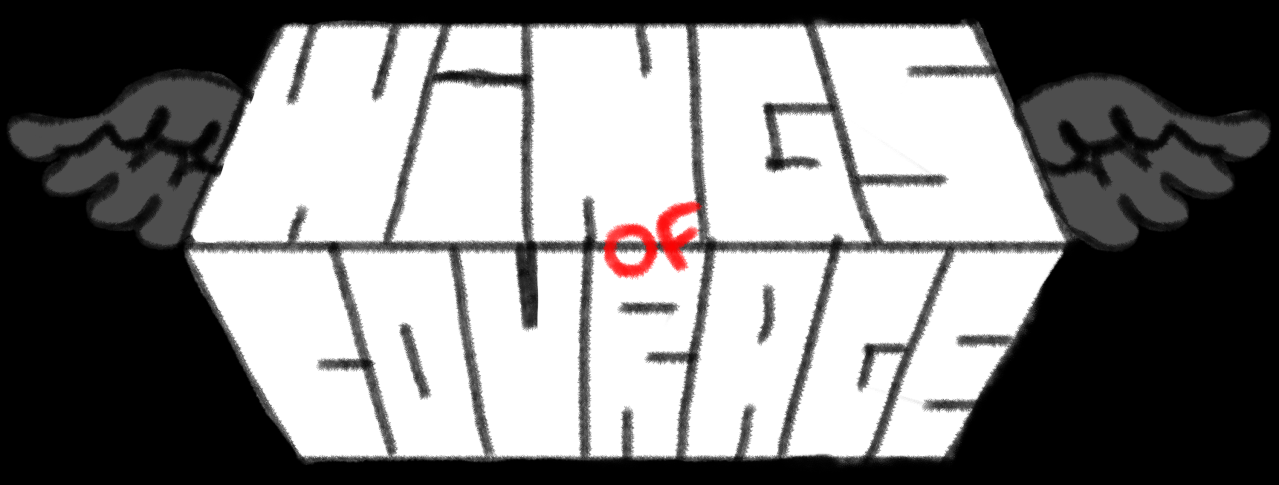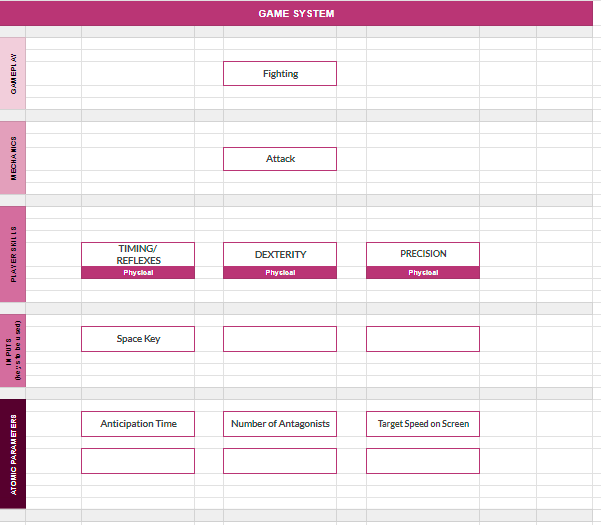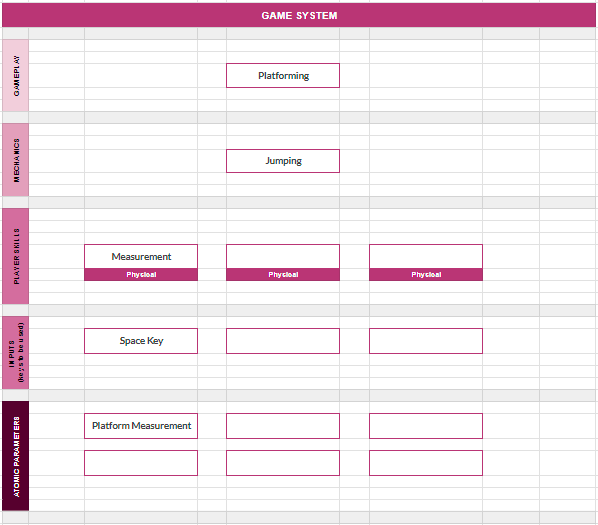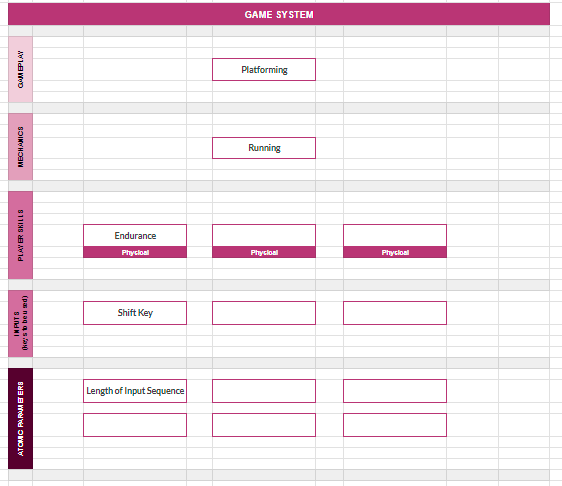Fight for the might of Leiria
Wings of Courage is an action-adventure fighting platformer about the legend of the battle of crows for Leiria from the 12th century, in which the main character is the last standing soldier after the King, D.Afonso Henriques, sent all of his troops to fight the moors, who had stolen the castle from Portugal. So it's up to our soldier to be the hero and get back the castle, with a crow somehow always near and by his side.
Our goal as a studio for this project is to create a fun and challenging game, not only for portuguese players but for those who don't know much about Portugal as well!
- Travel trhough 12th century Leiria
- Defeat different enemies while trying to take back the castle
- Listen for the mysterious crow's song

Wings of Courage is still in its early stages so we appreciate all the feedback we can get!
Credits
- Margarida Damião (Game Designer)
- Sofia Guapo Mendes (Game Programmer)
- Tiago Aguilar (Game Artist)
Powered by IPLeiria
Social Media
Duck Blast Studios' X account
Hello again, indieDB Community!
Welcome to the 3rd article about our in development game, Wings of Courage.
Today we are very excited to show you some Game Systems for some of the mechanics that will be in our game!
This post could be considered a continuation of our previous post, demonstrating the mechanics we will develop on today!
We also wanted to give some insight to the game design side of game development!
For the combat portion of our game, we chose the Fighting gameplay and Attack mechanics.
And so this is the table we created -

As is customary in several Action-Adventure Fighting games, the player will have to defeat enemies while advancing through the game world, with that in mind, we decided the player skills required here would be Timing/Reflexes, Dexterity and Precision, given that there need to be rules for the fighting between enemy and player, as well as, the rules for the enemies appearance and behavior.
To balance out those mechanics there were a few things we had to decide: How many enemies would there be at once? And how would they behave against the player and within the game world ?
To figure this out, we created an Atomic Parameter Table.

The delay before an enemy attack, is one of the factors that would most impact our games difficulty, we didn’t want to make the game too difficult at the start as to not startle newer players, but we also didn’t want to alienate the more experienced players, which is how we came to the 1 second delay in the easy setting, not too hard for inexperienced people and not that easy for people used to this type of game, we used this mindset in the medium and hard settings, by taking away 0.5 seconds per difficulty as a way to let the inexperienced players get used to this pace, as well as, giving the more experienced player the challenge they came into our game for.
Next was deciding the number of enemies there would be in each area at once, here we used the same mentality that we applied for the enemy attack delay, by slowly upping the difficulty so that players could get used to it while also offering a challenge. By having in the easy setting up to 3 enemies at once, these being the easy type, while in the medium setting we increased this, to up to 5 enemies at once, the being the easy and medium type, and finally in the hard setting we have the up to 4 enemies at once, which is less than previously, but given that these would be the medium and hard type of enemies, we believe it proves to be an even more difficult level.
Finally was the target speed on screen, in other words, how fast the enemy would move in the game world. For this we once again used the mentality applied previously, and with that we reached the gameplay of giving the enemy 50% of the players speed in the easy setting, the player’s speed will be presented within the Ingredients part of the Report, but for the purpose of clarity the player speed decided on is 32 pixels per second, which would make the easy enemy speed be up to 16 pixels per second, for the medium setting the enemy can now have up to 100% of the player’s speed, this would mean that the enemy would move at up to 32 pixels per second, in the hard setting the enemy will be able to move at up to 150% of the player’s speed, which would mean that the enemy will be able to move at up to 48 pixels per second.
For this last section we had previously decided on target predictability,or how the enemy would move in the game world. This parameter had to be scraped alongside the sidescroller format, since it would not really work without it and it also proved to be slightly confusing and inefficient.
Next we came up with the platforming systems, for the jumping and running mechanics we decided to implement.

For the platform jumping portion of our game, we decided to go with the Platforming gameplay and the Jumping mechanics, since we wanted to have some rules as to how one of the most important features of our game, jumping through platforms, would be designed. And so, the only player skill we utilized here was measurement.
While developing this we had one question to consider: How large would each platform be?
We tackled these questions by building the AP table for such a parameter.

Again we wished to make the game become gradually harder so that the players can maintain their engagement, but we also wanted to make sure it was not too hard in the first level so as to not startle newcomers.
With that in mind we came to the Platform Size Atomic Parameter in which we wanted to give the platforms a size for each difficulty, that would mean that the easy type platforms would have a large size, in the medium type they would have a medium size and in the hard type they would have a small size. This isn’t to say that in the hardest level all the platforms would have a small size, but that there will be different types of platforms in each level, and their size will change according to said level's difficulty.
Finally we wanted to give the player the ability to run through the game world, but we didn’t want that ability to be exploited, for example not giving the running mechanics any rules would leave the player able to endlessly through the level until they reach the end, removing any type of challenge from the game. With that we decided to add a stamina bar, that would control for how long the player could run.

And so for this running portion of the game, we chose the Platforming Gameplay and the Running Mechanics. With the knowledge that we only wanted to prevent the player from abusing the running ability the only player skill used here was Endurance.
While developing this mechanic we only had to ask ourselves a question we created previously: For how long will the player be able to run?
To answer that we turned towards the AP tables.

We again maintained the mindset used for all the previous systems that the game should start out relatively easy and get progressively harder.
We decided to go with a Length of Stamina Drop Speed parameter, that will determine how fast the stamina will drop according to the difficulty, which meant that in the easy type the stamina would drop slowly, within the medium type the stamina would drop normally and in the hard type the stamina would drop quickly.
We're glad to show the process of a Game Designer!
We've reached the end of our 3rd article.
We hope you've enjoyed it and see you next time!

#2 Wings of Courage Devlog - Game Mechanics Protoype
News2nd article about our in development game, where we will be going over some mechanic prototypes our programmer has been working on!

#1 Wings of Courage Devlog - Project Intro
News1st article about our in development game, Wings of Courage.













